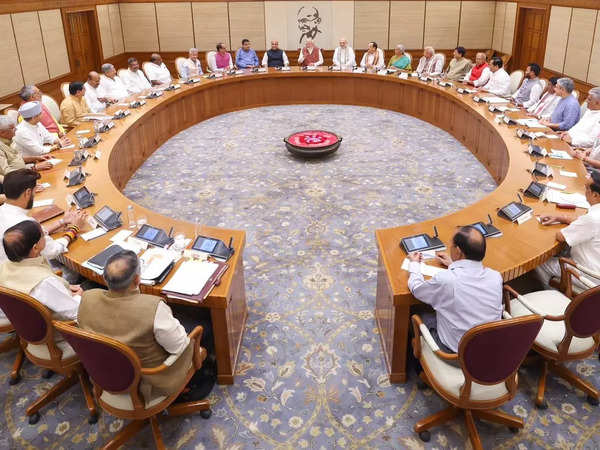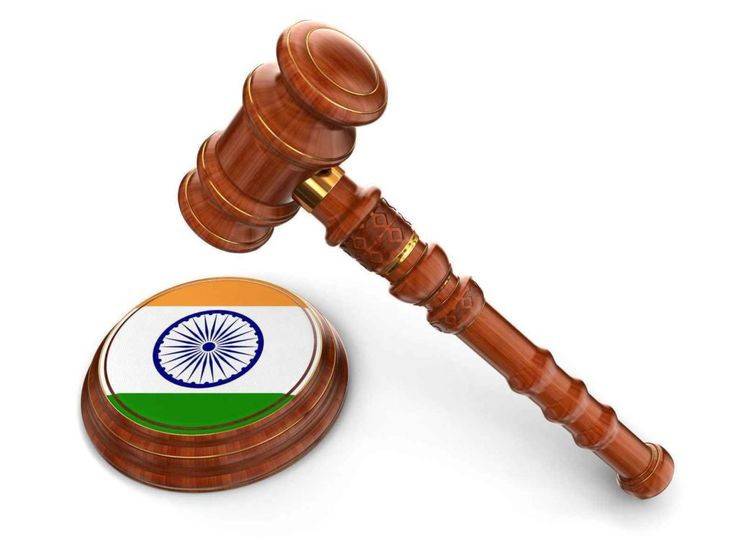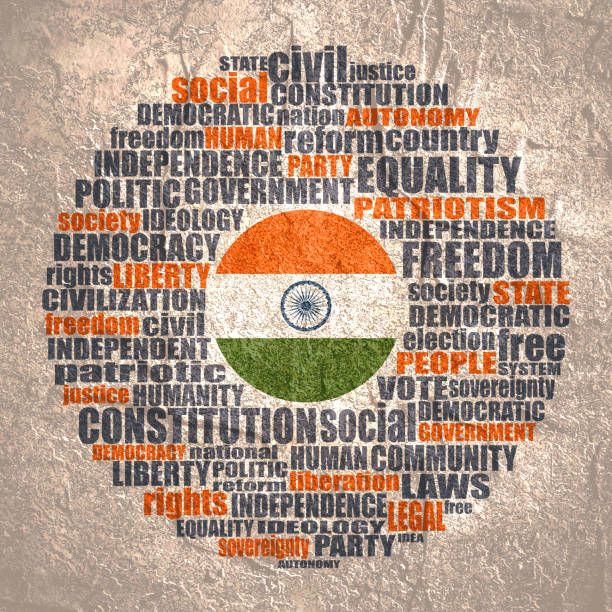Cooperative federalism is a cornerstone of India’s governance model, embodying the spirit of collaboration between the central and state governments. The concept is deeply rooted in the features of federalism that define the Indian Constitution, enabling a balanced distribution of powers and responsibilities across various levels of government. Federalism in India is unique, shaped by the country’s vast diversity and complex socio-political landscape. Understanding how cooperative federalism functions within this framework is crucial to appreciating its impact on India’s development and governance. This blog post will explore the key aspects of federalism in India, with a particular focus on the mechanisms and challenges of cooperative federalism, highlighting how this system has evolved and continues to play a pivotal role in the nation’s progress.

In This Post
ToggleWhat is Federalism?
Federalism, by definition, is a system of governance in which power is divided between a central governing authority and constituent political units. This division ensures that different levels of government can operate autonomously within their designated areas of authority while remaining united under a single national framework. The features of federalism include:
- Division of Powers: Authority is split between national and subnational governments, with each level having its jurisdiction.
- Constitutional Supremacy: A written constitution that clearly outlines the powers and functions of each level of government is vital for federalism.
- Independent Judiciary: A strong judiciary is essential to interpret the constitution and resolve disputes between different levels of government.
- Dual Government System: Federalism inherently involves two levels of government, central and state, each functioning independently within its sphere.
In global contexts, federalism has been successfully implemented in countries like the United States, Germany, and Canada, where the division of power has allowed for effective governance across large and diverse populations.

Historical Context of Federalism in India
In India, the concept of federalism has roots that can be traced back to ancient times. The Mauryan and Gupta empires, for example, had decentralized administrative structures where regional governors exercised significant autonomy. During British colonial rule, India experienced various forms of quasi-federal governance through the Government of India Acts, which gradually introduced provincial autonomy.Post-independence, the framers of the Indian Constitution adopted a federal structure that balanced the need for a strong central government with the autonomy of states.
The Indian Constitution, while defining India as a “Union of States,” incorporates key federal features that ensure a clear division of powers between the Center and the states.
Evolution of Federalism in Independent India
Since independence, federalism in India has undergone significant evolution. The initial years saw a strong centralization of power, driven by the need to maintain national unity and integrity. However, over time, there has been a gradual shift towards decentralization, particularly after the economic liberalization of the 1990s.
Several milestones in India’s federal evolution include:
- Reorganization of States (1956): Based on linguistic lines, which recognized the cultural and linguistic diversity of India.
- 73rd and 74th Constitutional Amendments (1992): These amendments empowered local governments (Panchayats and Municipalities), marking a significant step towards grassroots federalism.
- Goods and Services Tax (GST) (2017): The introduction of GST marked a new era of fiscal federalism in India, with the GST Council serving as a model of cooperative federalism.

Constitutional Basis of Federalism in India
The Indian Constitution enshrines federal principles through various provisions that delineate the powers and responsibilities of the central and state governments. The most notable of these include:
- Article 246: This article categorizes subjects into three lists—Union List, State List, and Concurrent List—defining the areas of legislation for both levels of government.
- Article 254: In cases of conflict between Union and State laws on a subject in the Concurrent List, the Union law prevails.
- Article 280 :The Finance Commission is established to recommend the distribution of financial resources between the Center and the states.
These constitutional provisions are designed to ensure that both the Center and the states can function effectively within their spheres of authority, making federalism in India both functional and dynamic.
Structure of Indian Federalism
Federalism in India is characterized by a clear division of powers between the Central Government and the State Governments. This division is outlined in the Seventh Schedule of the Indian Constitution, which consists of:
- Union List: Subjects on which only the Central Government can legislate (e.g., defense, foreign affairs).
- State List: Subjects on which only State Governments can legislate (e.g., police, public health).
- Concurrent List: Subjects on which both the Central and State Governments can legislate (e.g., education, marriage laws).The distribution of powers is a hallmark feature of federalism, ensuring that both levels of government can operate independently within their respective domains.
This structure allows for flexibility and adaptability, which are crucial in a diverse country like India.

What is Cooperative Federalism?
Cooperative federalism refers to a system where the central and state governments work together to achieve common goals. Unlike competitive federalism, which emphasizes rivalry and competition between states, cooperative federalism focuses on collaboration and coordination. The features of federalism that facilitate this cooperation include the division of powers, constitutional supremacy, and a robust framework for intergovernmental relations.
In India, cooperative federalism is essential for addressing complex national challenges that require joint efforts by the Center and states. This includes areas like public health, education, infrastructure development, and disaster management.
Mechanisms of Cooperative Federalism in India
Several mechanisms facilitate cooperative federalism in India, ensuring that both the Center and the states can work together effectively:
- Inter-State Council: Established under Article 263 of the Constitution, the Inter-State Council serves as a platform for dialogue and coordination between the Center and states on matters of common interest.
- NITI Aayog: Replacing the Planning Commission, NITI Aayog promotes cooperative federalism by involving states in the planning process and encouraging a bottom-up approach to development.
- Finance Commission: The Finance Commission plays a crucial role in fiscal federalism, recommending the distribution of financial resources between the Center and states.
- GST Council: The GST Council is a prime example of cooperative federalism, where both the Center and states jointly decide on GST rates, exemptions, and other related matters.

Examples of Cooperative Federalism in Social and Economic Development:
- Education: The Right to Education Act (RTE) is an excellent example of cooperative federalism in action. The central government, through the Ministry of Education, provides the overarching policy framework, while state governments are responsible for implementing and tailoring the policy to their regional contexts. This partnership has helped improve access to education across India, particularly in underserved rural areas.
- Public Health: The National Health Mission (NHM) is another example where the central government sets national health priorities, but the states are empowered to implement programs based on local needs. During the COVID-19 pandemic, the importance of cooperative federalism was underscored as the Center and states worked together to manage the crisis through shared responsibilities in healthcare delivery, vaccination drives, and economic relief measures.
- Infrastructure Development: The Pradhan Mantri Gram Sadak Yojana (PMGSY), a scheme aimed at enhancing rural road connectivity, demonstrates the effectiveness of cooperative federalism. While the central government provides funding and a broad framework, state governments execute the construction and maintenance of rural roads. This cooperative effort has significantly improved connectivity in rural India, fostering economic growth and access to markets.
Challenges to Cooperative Federalism in India
- Tensions Between Centralization and Decentralization – While cooperative federalism is essential for India’s governance, it is not without challenges. One of the primary tensions arises from the balance between centralization and decentralization. The central government often needs to assert authority in matters of national importance, which can lead to conflicts with states that wish to exercise their autonomy.
- Political Dynamics and Federal Relations– Political differences between the ruling party at the Center and those in state governments can lead to strained federal relations. These tensions can impact the smooth functioning of cooperative federalism.
- Judicial Interventions- The role of the judiciary in interpreting the Constitution and resolving federal disputes is crucial for maintaining the balance of power between the Center and states. However, judicial interventions can sometimes be seen as overreach, impacting the autonomy of states.
- Evolving Nature of Federalism in India-The nature of federalism in India is dynamic, and as the country faces new challenges, the balance between central and state powers continues to evolve. The emergence of new issues, such as digital governance, climate change, and migration, requires innovative approaches to cooperative federalism.

The Future of Cooperative Federalism in India
Strengthening Mechanisms of Cooperation
For cooperative federalism to continue playing a vital role in India’s governance, it is essential to strengthen the mechanisms that facilitate cooperation between the Center and states. This includes enhancing the effectiveness of existing institutions like the Inter-State Council and the Finance Commission, as well as exploring new platforms for dialogue and collaboration.
Promoting Inclusive Policy-Making
Future policies must increasingly involve state governments at the formulation stage, ensuring that regional perspectives are integrated into national strategies. This inclusive approach not only strengthens cooperative federalism but also ensures that policies are better suited to India’s diverse socio-economic landscape.
Emphasizing Flexibility and Innovation
The success of cooperative federalism will depend on the ability of both the Center and states to remain flexible and innovative in their approaches to governance. As new challenges emerge, such as the need for digital governance and climate action, the principles of cooperative federalism must adapt to ensure that all levels of government can work together effectively.
Empowering Local Governments
Strengthening cooperative federalism also involves empowering local governments. The decentralization of power to Panchayats and Municipalities, as envisioned in the 73rd and 74th Constitutional Amendments, must be furthered. Empowered local governments can play a crucial role in implementing policies tailored to local needs, thus enhancing the overall effectiveness of federalism in India.
Encouraging Fiscal Responsibility
The future of cooperative federalism also hinges on fiscal responsibility. Both the Center and states must work towards sustainable fiscal policies that ensure efficient allocation of resources, reduce dependency on central transfers, and promote financial autonomy at the state level.

Conclusion
Cooperative federalism in India is more than just a political arrangement; it is a foundational principle that allows a diverse and vast country to function effectively. By ensuring collaboration and mutual respect between the Center and the states, cooperative federalism has enabled India to address its complex challenges, from economic development to social welfare and beyond.
As India continues to evolve, the importance of cooperative federalism will only grow. Strengthening the mechanisms that facilitate cooperation, promoting inclusive and flexible policy-making, and empowering local governments are essential steps to ensuring that federalism remains robust and responsive to the needs of all citizens. The future of India’s governance will depend on how well the principles of cooperative federalism are upheld, ensuring that every level of government can work together to build a stronger, more united nation.
FAQ's
Cooperative federalism refers to a governance model where the central and state governments work together, sharing responsibilities and resources, to achieve common national goals while respecting the autonomy of each level of government.
While cooperative federalism emphasizes collaboration between the Center and states, competitive federalism encourages competition among states to attract investment, improve governance, and enhance efficiency. Both models coexist in India’s federal structure, balancing cooperation and competition.
Key features of federalism in India include a dual government structure (Center and states), division of powers as outlined in the Constitution, an independent judiciary to resolve disputes, and provisions for both cooperative and competitive federalism.
Cooperative federalism enhances policy-making by involving states in the decision-making process, ensuring that policies are better suited to regional needs. It promotes collaboration on national issues like education, health, and infrastructure development.
Challenges include tensions between centralization and state autonomy, political differences between the Center and states, fiscal imbalances, and disputes between states. These issues can strain the cooperative framework, requiring effective mechanisms for resolution.


1 thought on “Understanding Cooperative Federalism in India: Key Features and Impact (2024)”